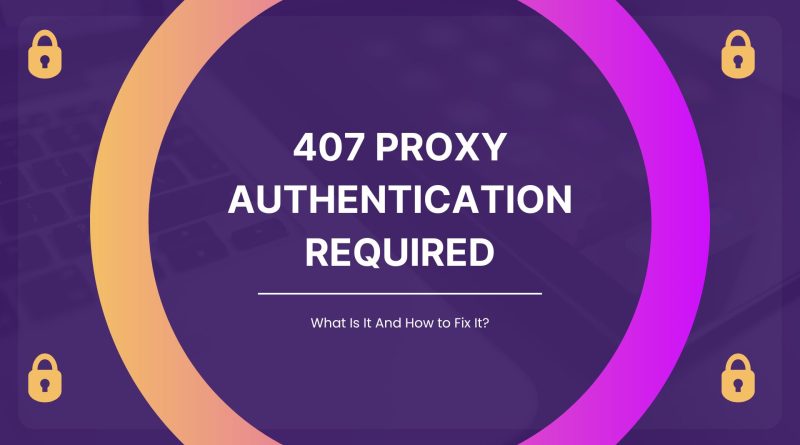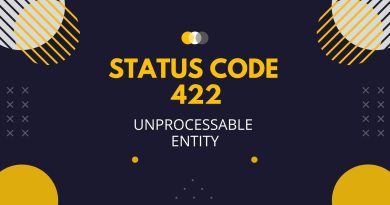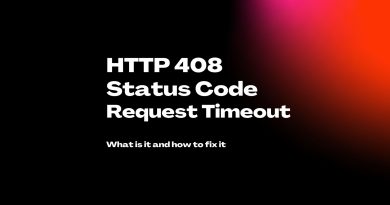407 Proxy Authentication Required: What Is It And How to Fix It?
If you’re reading this post, chances are that you’ve encountered the dreaded ‘407 Proxy Authentication Required’ http error in your web browser. But what exactly is it, and why does it happen? In this blog post, we’ll be diving into the details of what 407 error code is, why it pops up in your browser window, and most importantly – how to solve it once and for all! Read on to learn more about this often frustrating error message.
What are the HTTP Status codes
The HTTP Status Codes are a powerful set of codes that provide communications between web servers and clients to indicate whether a request for information was successful or not. These status codes assist with the execution of client requests, such as retrieving a requested webpage or submitting a form. Depending on the code returned, the client can then properly respond according to indicators such as success or failure. Common codes used in HTTP Status Codes are 200 OK, 404 (Not Found) and 500 (Internal Server Error). Knowing these different codes can be beneficial when troubleshooting technical issues or when further understanding server responses.
What is the 407 Proxy Authentication Required?
The 407 Proxy Authentication Required is an HTTP response code, which indicates that the client must first authenticate with a proxy server in order to access the requested resource. The response code is generally sent in conjunction with a challenge from the web server, prompting for user authentication and granting access once proper authentication credentials are supplied. This type of authentication system can be used to deny or limit access to certain content, depending on the user’s authorization level. 407 Proxy Authentication Required works on an intermediary-only basis, requiring users to re-authenticate when accessing a different target resource within the same domain. It can be used beneficially as a security measure, serving as one more way of ensuring only approved users are accessing restricted content.
Server side or Client side error?
The 407 error code is considered a “proxy authentication” error. This indicates that the server has received a request from the client, but the request failed to properly authenticate itself with the proxy server. In other words, this error is caused by a configuration issue on either the client or server of whichever technology is being used to communicate between them. In most cases, it can be assumed that it is a server-side issue as an improperly configured firewall or another security feature might be preventing requests coming from or going to certain hosts. That said, it is sensible to also check your client side settings before seeking out solutions to correct an issue on the server side.
How to fix the “407 Proxy authentication required” error?
Here are some ways to fix Status Code 407:
- Check your proxy settings: Make sure that your proxy settings and .htaccess file syntax is used correctly and that you are using the correct username and password to authenticate with the proxy.
- Check your firewall settings: specific firewalls may restrict access to certain websites or servers, leading you to encounter the 407 error. As a result, you might need to add an exception in order for entry into those restricted areas on your firewall configuration.
- Check for malware: malicious software might be to blame. To make sure your computer is free of any malware or viruses that may redirect traffic through a proxy server, run a scan and remove such malicious code from your system.
- Clear your cache and cookies: a possible cause may be aged or corrupt cache and cookies from your computer. To solve this problem, implementing the deletion of these elements can help restore functionality to your browser.
- Contact your network administrator: Attempting to resolve the 407 error on your own can be a difficult task, so it may be best for you to reach out for help from your network administrator. They are experienced professionals who will gladly assist you in diagnosing and identifying the cause of this issue.
Similar HTTP status codes
Something similar to this error is the “401 Unauthorized code”, which indicates that a request lacks valid authentication credentials and ask the client to reattempt and provide proper credentials. Although not technically related to the 407 Proxy authentication required, the 502 Bad Gateway code is also seen regularly in web development; while this means that a server isn’t successfully responding to requests, it too deals with access problems like the 407 and 401 errors. An experienced webmaster would be wise to become familiar with all relevant HTTP status codes in order to avoid any collisions or confusion stemming from these messages.
All HTTP status codes by categories
Informational responses
(100 – 199)



